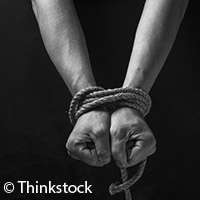Understanding the economics of human trafficking

Although Europe is one of the strictest regions in the world when it comes to guaranteeing the respect of human rights, the number of people trafficked to or within the EU still amounts to several hundred thousands a year according to the European Commission. The most common forms of such trafficking include sexual and economic exploitation, the removal of organs and forced illegal activities such as petty theft.
Last year, a Eurostat report shed some light on the state of human trafficking in Europe, and stressed that 'significant challenges remain in tackling the different aspects of trafficking in human beings'. But aside from the figures themselves, what do we know about this business, the people who run it, the factors that allow it to thrive and the profile of the victims? The answer is, undoubtedly, 'not much'.
Tackling human trafficking in Europe requires a more in-depth knowledge of its causes. Well aware of this knowledge gap, the European Commission is funding the FP7 project TRACE, a two-year initiative which kicked off in May 2014 and aims to better understand the perpetrator and the victims as well as investigating how the recruitment process takes place.
The project's main focus will be on understanding human trafficking as a business. Together, the team will create a conceptual map of the human trafficking industry to better picture how it has been defined and framed in Europe. They will investigate the links between human trafficking and other forms of organised crime, study the geographical modus operandi of traffickers and look at the factors that have influenced this business such as the economic crisis, political instability and conflicts, corruption, and technology - with the Internet being broadly acknowledged as a means for traffickers to create a tighter network and intensify their work.
Another key aspect of this research will be the analysis of the specific characteristics of all individuals involved, that is, who are the traffickers, why some victims become traffickers themselves and how third parties facilitate this business.
TRACE will benefit from the expertise of a multi-disciplinary consortium comprising an SME specialised in technology and security research (Trilateral Research & Consulting), two universities (VUB in Belgium and Tilburg University in the Netherlands), the Council of Baltic Sea States Secretariat (Sweden), the Cyprus Police and two civil society organisations (La Strada International in the Netherlands and the French Committee Against Modern Slavery in France).
Once all data has been gathered, the consortium plans to share its findings while also actively participating in various international activities including conferences, workshops and attending meetings relevant to its aims and objectives. The team will also seek to further share their findings by publishing results in journals, the press and via briefing papers targeting various stakeholders.
Provided by CORDIS
















